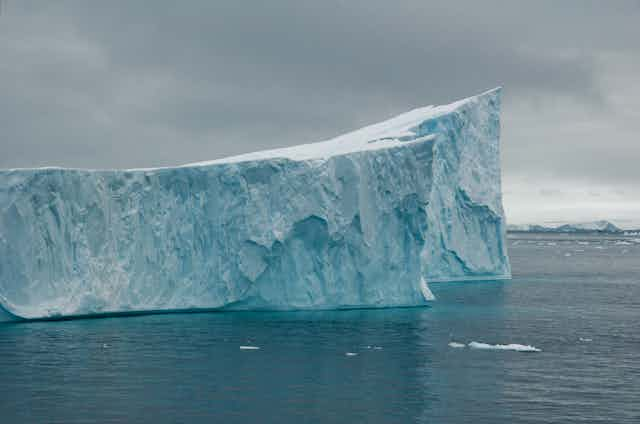An international study of ice cores has helped researchers pave the way for a better understanding of how Antarctica’s volcanoes have affected the global climate over the past 2,000 years.
The research, published this week in the journal Nature, has “filled in” the record of Antarctica’s historic volcanic sulphuric emissions.
Led by Michael Sigl and Joe McConnell of Nevada’s Desert Research Institute (DRI), the study combined work from research teams around the world, including collaboration with scientists from the Australian Antarctic Division (AAD) and Curtin University.
Large volcanic eruptions can have a significant impact on the global climate through the release of sulphur dioxide. This leads to the formation of microscopic particles known as volcanic sulphate aerosols.
By reflecting the sun’s radiation back to space, these particles cool the earth, and have been linked to short term global cooling. They then gradually fall back to earth – depositing in the clean Antarctic snow.
Layers in the snow
The layers of sulphate deposition records obtained from drilled ice cores helped map out volcanic activity in the distant past – similar to using rings on a tree to tell its age.
This international project brought together the largest array of ice core sulfate data in the world, including the West Antarctic Ice Sheet (WAIS) ice core, which is considered one of the most easily interpretable ice core records.

With a total of 19 separate sites across Antarctica, and combining records from 26 separate ice cores, researchers were able to obtain accurate sulphate deposition records dating back 2000 years.
Ice core specialist Dr Ross Edwards, a Senior Research Fellow at Curtin University and one of the study’s authors, said this allows for a greater understanding of Antarctica’s volcanic past - and also its future.
“We absolutely require these ice core records to estimate the past sensitivity of the earth’s climate system”, Dr Edwards said.
“We required a whole series of ice cores from Antarctica to get a robust estimate of the deposition rate of the volcanic sulphate, and therefore the spacial distribution of sulphate in the stratosphere.”
Dr Edwards, who mainly worked analysing the Antarctic ice core samples, said this research will help develop climate models for the future.

Dr Tas van Ommen, glaciologist with the Australian Antarctic Division, worked with co-author Mark Curran studying one of the primary ice cores from the Law Dome site.
“As a result of this work, we now have what we call a ‘volcanic forcing record’,” he said.
“This tells us when [volcanoes] occurred and how big they were, for the last 2000 years. We can combine that with knowledge of how the climate has changed over that period and test climate models.
"We now have more confidence in the models that can get the past right, as we predict what’s happening in the future.”
Dr Andrew Glikson, paleoclimate scientist from the Australian National University was not involved in the study, but he described the findings as “significant”. But he also said the global climatic impacts may have been overstated.
“The short atmospheric residence time of sulphur dioxide and sulphuric acid, which range between one and three years, render volcanic eruptions short lived events in the history of the climate,” he said.
“Further, the paper, while offering an interesting contribution to the study of paleo-climate, bears limited relevance to the issue of anthropogenic global warming and its partial masking by sulphur dioxide emissions.”
While this study has gone a long way towards understanding historic sulphate microscopic particle levels, Dr Edwards said he hopes to go further, using new equipment at Curtin University to analyse other microscopic aerosol particles.
“We have a new facility called the TRACE Facility”, he said.
“We’re set up now to develop new dating for some of the other remaining cores, but we’ll also be able to look at carbon, which is another aerosol changing the atmosphere.”

